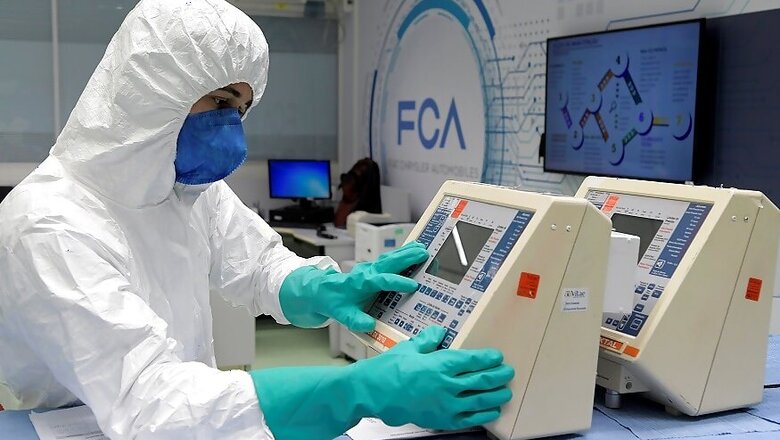
views
Ventilators have become the single most important piece of medical equipment for critically ill coronavirus patients whose damaged lungs prevent them from getting enough oxygen to vital organs. The machines work by forcing air deep into the lungs, dislodging the fluid and accumulated pus that interfere with the exchange of oxygen, a process orchestrated by tiny air sacs known as alveoli.
It’s still not clear how lungs are impacted by COVID-19
Lungs are complex organs that deliver oxygen to the bloodstream and keep organs functioning.
Human lungs are spongy vessels made up of millions of microscopic, balloon-shaped air sacs called alveoli, the workhorse of the respiratory system where the exchange of gases takes place.
A single alveolus, no bigger than the width of a human hair, is ringed by a mesh of tiny capillaries that transport oxygen to the bloodstream.
In healthy lungs, an alveolus allows oxygen to reach the bloodstream and expels carbon dioxide that is then exhaled.
Although experts are still trying to understand how COVID-19 attacks the lungs, the air sacs in many patients become inflamed and fill with fluid, hampering the body’s ability to take in oxygen and remove carbon dioxide.
A ventilator can help patients get the oxygen they need to stay alive …
Ventilators are not a cure for COVID-19 patients, but mechanical breathing assistance can keep patients alive while they battle the infection.
Critical care ventilators are more than just air pumps. They are finely tuned machines with software that must be constantly adjusted by skilled medical workers to ensure that patients receive the right combination of oxygen level, pressure, breath volume and breathing rate.
… but ventilating a patient is far from a guaranteed fix
Non-coronavirus patients on ventilators have about a 50% survival rate. The mortality rate for coronavirus patients on ventilators is not yet clear — in part because, with no proven method of treatment for the virus, coronavirus patients are often being kept on these machines for weeks in order to keep them breathing long enough to give their lungs a chance to heal.
Intubation is fraught. Patients must be heavily sedated to allow doctors to insert a breathing tube into the lungs — and to prevent them from waking up and pulling out the tubes. Because too much air pressure can damage the lungs, intubated patients must be constantly monitored.
Health care providers are exploring new techniques
Fears of a ventilator shortage in New York and the poor prognosis for intubated patients have helped spur innovations for sustaining patients without relying on critical care ventilators.
Health care providers have embraced a maneuver that has long been used for ventilated patients — periodically turning them on their stomach to increase lung capacity. Proning, as it’s called, opens up areas of the lungs that are normally compressed by the weight of the heart when lying on one’s back. Doctors are currently studying whether using proning for some patients in respiratory distress can allow them to recover without being placed on ventilators.
Flipping over patients in acute respiratory distress, doctors have discovered, can markedly increase oxygenation. The process can be labor-intensive, however, requiring staff to turn over patients several times a day.
... and less expensive treatment alternatives
Medical workers have increasingly turned to CPAP and BiPAP machines, inexpensive air pumps used by millions of Americans with sleep apnea, chronic obstructive pulmonary disease and other breathing disorders. Hospitals have been repurposing unused machines and using them both with or without intubation to send pressurized air into the lungs of coronavirus patients.
To reduce the risk of infection for hospital workers, doctors have also been fitting patients with jury-rigged helmets that deliver oxygen via CPAP machines while filtering out exhaled viral particles. The helmets were pioneered by Italian doctors forced to improvise because of a shortage of intensive care ventilators.















Comments
0 comment